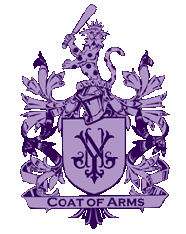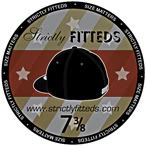WAYNE NIEMI
Are footwear firms making progress in the counterfeiting battle?
In 2006, U.S. Customs and Border Protection and U.S. Immigration and Customs Enforcement reported 14,675 seizures translating into $155 million in fake goods. Of that tally, shoes accounted for 41 percent. By comparison, in 2005, law enforcement intercepted less than $9 million in footwear.
While seizures of fake shoes were up for 2006 and initial estimates show 2007 numbers even higher, illegal manufacturers are becoming more sophisticated in their operations and the Internet also has added another level of difficulty to tracking distribution channels.
“I wouldn’t say that we’re winning yet,” said Kevin Burke, president and CEO of the American Apparel & Footwear Association. “But we’re fighting a gallant battle and making the right impression with people that this is a serious issue for us.”
Katie Wilson, senior manager of communications at the U.S. Chamber of Commerce, agreed that U.S. Customs officials have greatly improved their ability to detect fraudulent goods. “Certainly, we’ve seen a significant increase in seizures in the past few years,” she said.
Travis Johnson, associate counsel at the Washington-based International Anti-Counterfeiting Coalition, also said that the number of seized goods has gone up dramatically, but just how much it has hurt counterfeiters’ profits is harder to determine.
“This year, it looks like [customs seizure] numbers will far outstrip those seized last year,” said Johnson. “That’s for footwear, as well as for counterfeit goods across the board. The bad news is that we really have no hard, firm grasp as to how much counterfeit product is moving through the trade networks.”
The Organization for Economic Cooperation and Development in June reported results from phase-one of a three-phase research project that an estimated $200 billion in counterfeit goods crossed international borders in 2005. This number did not include domestic production and consumption of fake products, meaning that counterfeit shoes manufactured in China and sold in China were not included. As the group continues to study counterfeit activity that occurred in 2005, the final tally of fake goods will likely be higher.
“China is such a massive market. Who even knows how much is sold there?” said Johnson. “That’s why [OECD’s] final estimate will probably be around $600 billion to $650 billion.”
So regardless of the success of recent crackdowns on counterfeit rings, the number of seized shoes barely makes a dent in the counterfeit footwear and apparel market, which the U.S. Chamber of Commerce estimates at $12 billion annually.
“It’s such a hard thing because you only know what you catch, and you don’t know what else is out there,” said Wilson.
Recent Victories
There’s no question that law enforcement is taking counterfeiting more seriously, and police departments in New York and Los Angeles have established task forces to deal with the issue. Recent successes suggest that their approach is working.
A police raid on Oct. 1 in Queens, N.Y., nabbed $4 million in counterfeit apparel branded as The North Face, Polo, Lacoste, Rocawear, Seven for All Mankind and Fubu. Tags and labels for Nike, Adidas and Tommy Hilfiger, among others, also were discovered.
The warehouse where the goods were seized — three tractor trailers worth — allegedly was being used as a finishing facility where the tags, embroidery and logos were added to garments before hitting the streets.
While some industry experts worried this could signal a rise in domestic manufacturing of counterfeit goods, Burke said he took it as a sign that the crooks are running scared. “If they are going to the effort of bringing the product in and doing the labeling and detail work here, it means they are having a harder time getting the product out of their ports and into ours,” he said. “I see that as a positive sign and I’m pleased that the government is taking this issue seriously.”
That victory for law enforcement followed a mid-September capture in New York of 160,000 pairs of Nike shoes with a retail value of $7 million.
But it’s not just the high-profile, large-scale crackdowns that are hindering counterfeiters.
Smaller busts also are increasing, such as an arrest earlier this month of an Easton, Pa., storeowner who allegedly was in possession of 188 pairs of counterfeit Nike sneakers.
Similarly, a Jacksonville, Fla., man was arrested recently in an undercover sting operation that snared 222 pairs of fake Nike shoes worth $13,320.
Attorney, investigator and intellectual property expert Harley Lewin said it may be the steady drumbeat of smaller arrests that will dissuade would-be counterfeiters and make clear that companies intend to defend their marks. “We don’t turn our noses and look the other way, even on something small,” Lewin said. “That’s what you have to do to get the right message out there.”
Lewin routinely circles the globe on behalf of New Balance and Adidas to bring the fight to the crooks. In January, Lewin helped New Balance win a civil lawsuit in a Chinese court against the imitator firm Niu Bar Lun, which went as far as selling franchise businesses in major cities around China. “We got three favorable judgments and we got paid on them,” he said. “But it took me three years with the aid of the Chinese government and the U.S. government, so it’s not quick and it’s not cheap.”
The result, however, could be priceless. “Now, New Balance is known countrywide as being tough, and any counterfeiter will have to think long and hard before going after them.”
Still, Lewin said favorable outcomes in Chinese courts are far from predictable. “We took a substantial risk by taking them to civil court,” he said. “That’s something that isn’t usually done there.”
The China Conundrum
While the official message out of Beijing is that the government respects intellectual property laws, Lewin said provincial and local courts are reluctant to issue penalties for what many in the region don’t consider a crime.
“There are an awful lot of people in China who make a pretty good living from counterfeiting, and it keeps a lot of people employed,” said Lewin. “The local courts aren’t about to throw those people out on the street.”
Adding to the complexity of prosecuting counterfeiters is Chinese law, which Johnson said requires plaintiffs to prove that a certain amount of goods were sold in order to meet the legal definition of counterfeiting. And since most false goods are sold through masked market channels, it’s challenging to obtain documented proof of sales.
“Criminal enforcement of intellectual copyright laws in China is, to a large extent, nonexistent,” said Johnson. “When they do prosecute, the Chinese government tends to prefer an administrative fine. The amounts of the fines that are handed out are not nearly sufficient to discourage counterfeit manufacturers.”
While the Chinese legal system lags behind Western courts in terms of punishment, the manufacturing operations of counterfeiters are state-of-the-art.
“It goes hand-in-hand with China’s development as a manufacturing power,” said Johnson. “They have the most sophisticated manufacturing machinery in the world.”
As a result, the quality of counterfeit shoes is on the rise, making it increasingly difficult to distinguish legitimate products from fakes.
“The fact of the matter is that these products look essentially identical to the real products,” said Wilson.
Asic America’s VP and General Counsel Michael Zall said that recently, while seeking a preliminary injunction against a trademark infringer, even the defense mixed up the product.
“[The attorney] picked up a shoe thinking it was his client’s shoe, trying to point out some distinctions between his client’s shoes and the Asics shoe,” he said. “Looking confused, he realized he had picked up the wrong shoe. Case closed. Preliminary injunction granted.”
According to Johnson, that is a drastic change over the previous decade. “Overall, the quality of the counterfeits that we see, at least on the surface, has improved significantly over the past 10 years,” he said. “Of course, the durability and functionality isn’t there, but you would have to take it apart to know that.”
The profitability of counterfeit shoes also is attracting more sophisticated criminal networks that see bogus manufacturing as a high-reward, low-risk venture.
“The nature of the problem is that narcotics give a return of 10 to 1,” said Lewin. “Counterfeiting gives a return of 16 to 1 and your partners don’t try to kill you, and it is considered a victimless crime, or not a crime at all.”
The Internet has added another layer of protection to counterfeit organizations. Whether purchased through eBay or other online venues, shipments are generally sent by private carriers in small quantities, which easily enter the country without inspection.
“We’re seeing quite a bit of Internet traffic of counterfeit goods,” said Johnson. “Those tend to be smaller shipments, like a single pair of sneakers sold through an auction site.
“If you do a search for Nike on eBay, you’ll get thousands of hits that are all focused on limited-edition sneakers,” he said. “That’s probably more hits than the whole run, or else it wouldn’t be limited edition, and they couldn’t get such a high price.”
Looking Ahead
Experts agree that there is no easy fix to the counterfeiting dilemma. Still, there is reason for some optimism.
For starters, governments in both the U.S. and China are taking the issue more seriously.
“This is now something that is discussed at the highest levels of government,” said Burke. “It didn’t used to be that way.”
As China’s economy evolves and its domestic businesses start producing original merchandise, the government will have more incentive to address the issue of trademarks, said Wilson. “It’s in their own best interest to protect intellectual property,” she said.
And as port security becomes a higher priority in the U.S., there should be more chances to catch counterfeit goods entering the country.
“Most of our members spend well into the seven figures trying to seek out and stop counterfeits of their products that are coming into the U.S.,” said Johnson. “We spend significant sums training law enforcement to detect counterfeit products.”
Anti-counterfeiting associations also are dialing up their efforts to thwart counterfeiters. “Our response to the issue as an industry has gotten better and better,” said Burke. “The industry has put together a first-rate coalition to combat counterfeiting. We’re trying everything we can to put the spotlight on this issue.”
The U.S. Chamber of Commerce further developed its anti-counterfeiting and piracy initiative that it began in 2004 with a global expansion of the program this month.
“This expands on what we’re doing with a more global look, with education for legislators and consumers on how important of an issue this is,” said Wilson. “If we don’t address it now, it’s just going to get worse and worse.”
For their part, the brands were hesitant to discuss their efforts to combat counterfeiting, out of fear of tipping off their criminal counterparts. However, they still want the crooks to know they’re banding together with other brands, investigators, attorneys and law enforcement agencies to track them down.
“We are committed to protecting the integrity of our brand, and equally committed to prosecuting those who try to exploit it,” said Danette Wineberg, Timberland’s VP, general counsel and secretary.”
skip to main |
skip to sidebar
archive
-
▼
2007
(249)
-
▼
10/21
(15)
- Savage Integrity Exhibit
- HAPPY 3YR Goliath RF......
- CLAW MONEY Release
- Happy 3YR SHQ....
- Derrin Maxwell @ SputNik
- Orchard St. Halloween Jimmy Jam....
- ReeBok+Voltron
- Laces Blow-Out Sale
- Get Ur Healhty On
- MissBehave/Mass Appeal Halloween Jimmy Jam in the ...
- Fighting the Fakes
- Video Of The Week
- Base. How Low Can You Go Pt.III
- Beware....
- Love Brigade Co-Op Opening in The Billy Burg
-
▼
10/21
(15)



















No comments:
Post a Comment